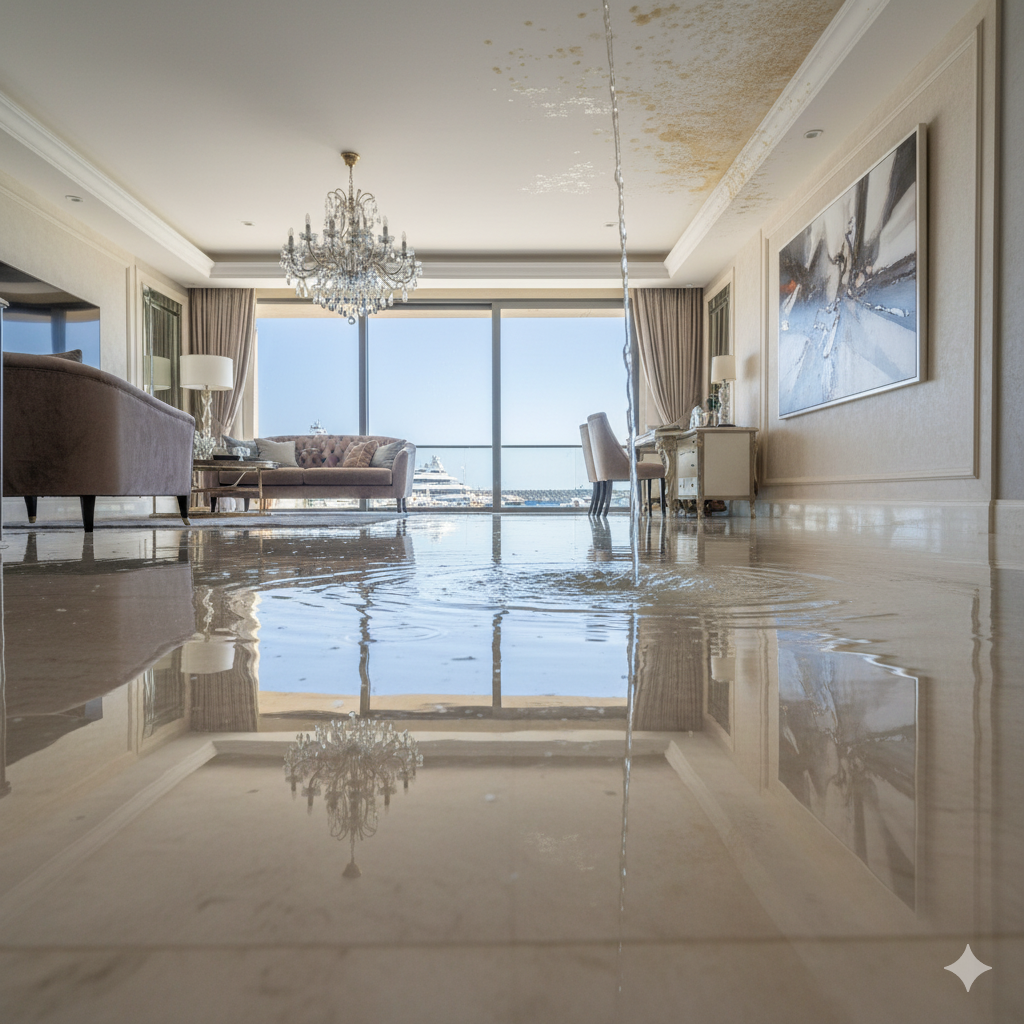A small warning, then a big disaster
The client first noticed minor seepage in a small lavatory during refurbishment works in the flat above. That was fixed quickly. Two months later, he came home to a full-apartment flood—the upstairs workers had left a tap open.
Our assessment process
We documented the damage with a visual and photographic survey, then used thermal imaging to look beyond the paint and plaster. Thermal maps help us see retained moisture that hasn’t yet shown on the surface.
What we found
- Heavy moisture and damage in the corridor ceiling.
- Significant impact in bathrooms and bedrooms.
- A copious mould bloom on walls, furniture and soft furnishings—typical after warm, stagnant moisture.
Practical recommendations
- Remove and replace affected gypsum ceilings and parquet flooring (both highly vulnerable to water damage).
- Bring in professional mould remediation to clean, treat, and safely dispose of compromised materials.
- Run dehumidifiers and ensure controlled ventilation, then re-test with moisture meters before reinstatement.
- Consider anti-mould paints and vapor-open finishes to help the building dry naturally.
Why it matters
Floods are dramatic, but it’s the hidden wet areas that cause the long-term trouble. Our thermal imaging gave the client and his insurer a clear map of what to strip, what to save, and how to prevent mould returning.
Had a leak or flood? Start with a thermal moisture map. See [Services] or [Contact us].







